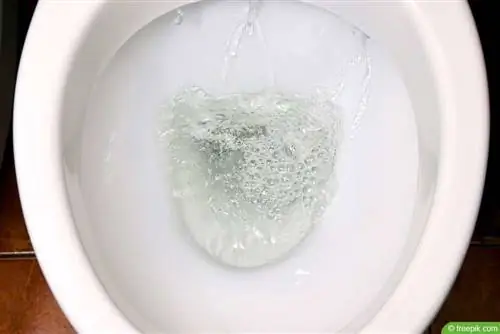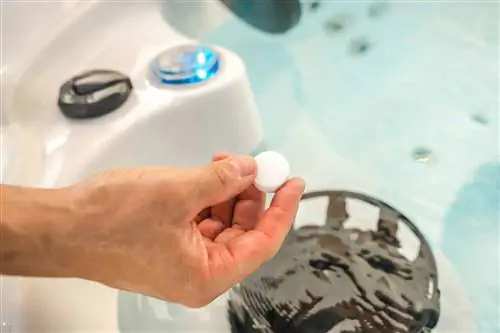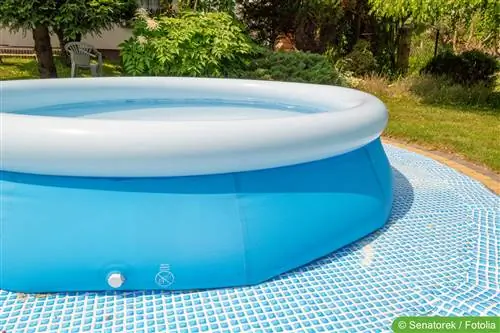- Author admin [email protected].
- Public 2023-12-17 03:39.
- Last modified 2025-01-24 12:45.
If you are struggling with not enough water in your toilet cistern, this article will help you. For the individual causes, solutions are offered to solve the problem.
Preparation
Before you can deal with the individual causes of the low water level in the toilet cistern, you must first open the cistern. The cistern is closed with a lid, which can be opened easily or with a little force, depending on the age and condition of the toilet. Some models have screws that must be loosened first. After opening, lift the operating arm upwards and close the water inlet valve so that no more water can flow into the box. A concealed cistern is much more difficult to open because it sits directly in the wall. To access this, the cover must first be removed. In this case, it is advisable to seek the help of a professional who can at the same time determine what the actual problem is.
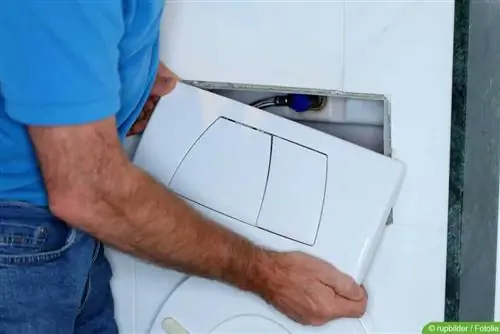
Tip:
If the cistern lid is locked and you don't have enough strength, just ask family and friends for help.
Swimmer
Float problems are the most common cause of low water level in the flush tank. The float or float valve regulates the water level and allows too little water to flow into the cistern when it stops working properly. There are therefore some points that you should check regarding the float:
- Calcifications
- Swimmer's lead is stuck
- Sponge soaks up (older toilets only)
There is a solution to all these problems. If there is calcification, close the toilet inlet valve and remove the float. Clean it with a descaler and then reinstall it. An older model with sponges inside is replaced by new versions with Styrofoam or plastic. These cannot become saturated and can therefore be used for much longer. If the float is wedged, check and remove the cause. In many cases it is due to material fatigue, as floats are usually made of plastic and can bend. In this case, replace it.
Tip:
Sometimes it happens that it is not the float that is directly damaged, but only the seals within the component. Check the seals for limescale, dirt and damage and replace them if necessary.
limescale deposits
If you notice a lot of limescale deposits in the cistern, this could be the reason why there is significantly less water. In this case, it is recommended to completely descale the cistern so that the water can flow unhindered. You can use home remedies for descaling:
- Citric acid: 2 tsp to 1 L water
- Vinegar essence: 1 part to 2 parts water
Prepare as much of the descaling agent as will fit in your cistern. The inlet valve should remain closed and the actuating arm should be kept up during the two-hour exposure time. After the exposure time, open the valve and let the arm go down again. If you're lucky, the deposits will be loosened and removed with the next rinse. Check whether enough water is now being fed into the cistern.
Toilet inlet valve
More rarely, the cause of the low water supply is problems with the inlet valve. The cistern receives water via the inlet valve, which is used for flushing. In older toilets that have not been used for a long time, the valve is often calcified and needs to be replaced. Other causes of possible damage or even blockage cannot be ruled out. If you suspect a problem with the inlet valve, contact a professional as the cistern must be dismantled to replace it.
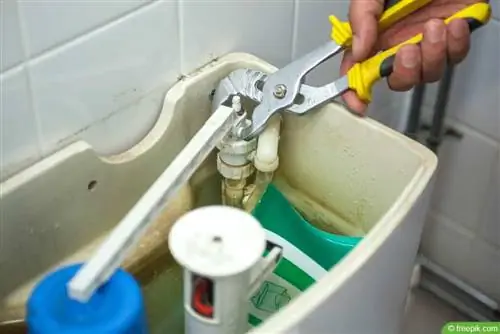
Tip:
In addition to the inlet, the corner valve, which is also located in the concealed cistern, may be damaged or calcified. If this is the case, you should also seek the help of a professional.

